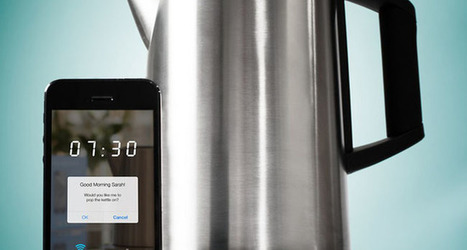Here’s an object lesson on the poor state of the so-called Internet of Things: Robert Stephens plugged a Wi-Fi-connected security camera into his network and it was compromised in… 98 seconds.
Stephens, a tech industry veteran, wasn’t so naive as to do this without protecting himself. It was walled off from the rest of the network and rate-limited so it couldn’t participate in any DDoS attacks.
He monitored its traffic carefully, expecting to see — as others have — attempts to take over the device. But even the most jaded among us probably wouldn’t have guessed it would take less than two minutes.
Get Started for FREE
Sign up with Facebook Sign up with X
I don't have a Facebook or a X account
 Your new post is loading... Your new post is loading...
 Your new post is loading... Your new post is loading...

Richard Platt's curator insight,
October 28, 2015 7:17 PM
A security man has mapped and hacked insecure connected kettles across London, proving they can leak WiFi passwords. The iKettle is designed to save users precious seconds spent waiting for water to boil by allowing the kitchen staple to be turned on using a smartphone app. Pen Test Partners bod Ken Munro says hackers can make more than a cuppa, however: armed with some social engineering data, a directional antenna, and some networking gear they can "easily" cause the iKettle to spew WiFi passwords. "If you haven’t configured the kettle, it’s trivially easy for hackers to find your house and take over your kettle," Munro says. "Attackers will need to setup a malicious network with the same SSID but with a stronger signal that the iKettle connects to before sending a disassociation packet that will cause the device to drop its wireless link....

Jeff Domansky's curator insight,
October 3, 2015 9:36 PM
Proliferation of devices leads to higher risk. Many IoT challenges ahead. |

Richard Platt's curator insight,
October 28, 2015 7:21 PM
More detail on the tea kettle that can be hacked and understand how this thing called WiFi technology needs a bit more robustness to mitigate the threat of being hacked. Read on. |















Here's a cautionary tale about IoT devices, and the risk of malware and other security issues.